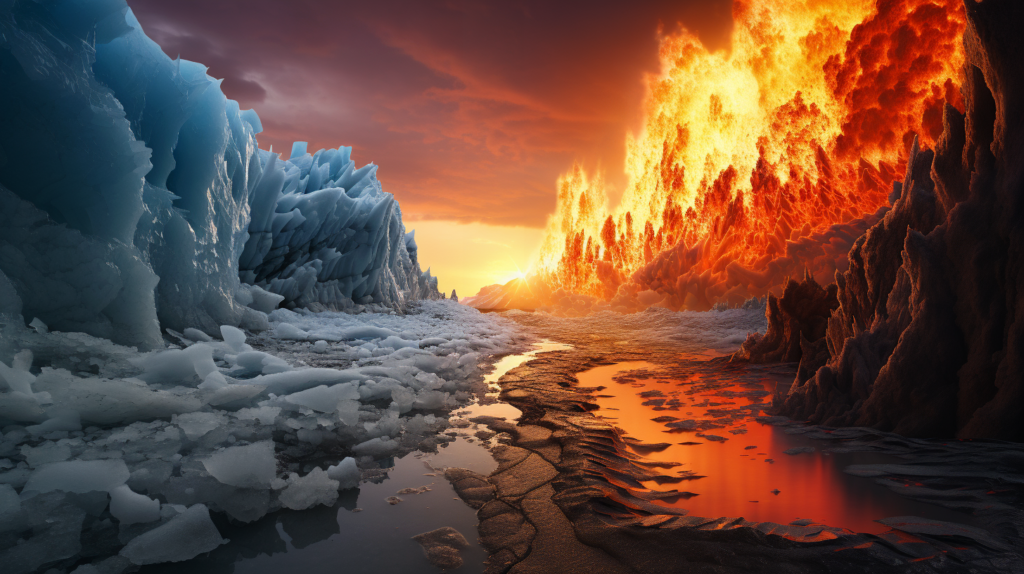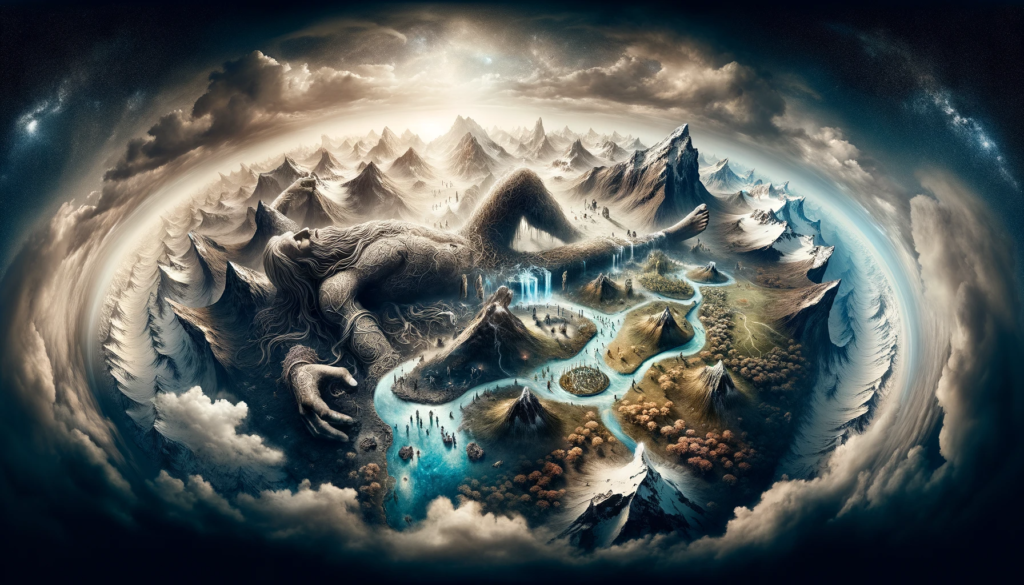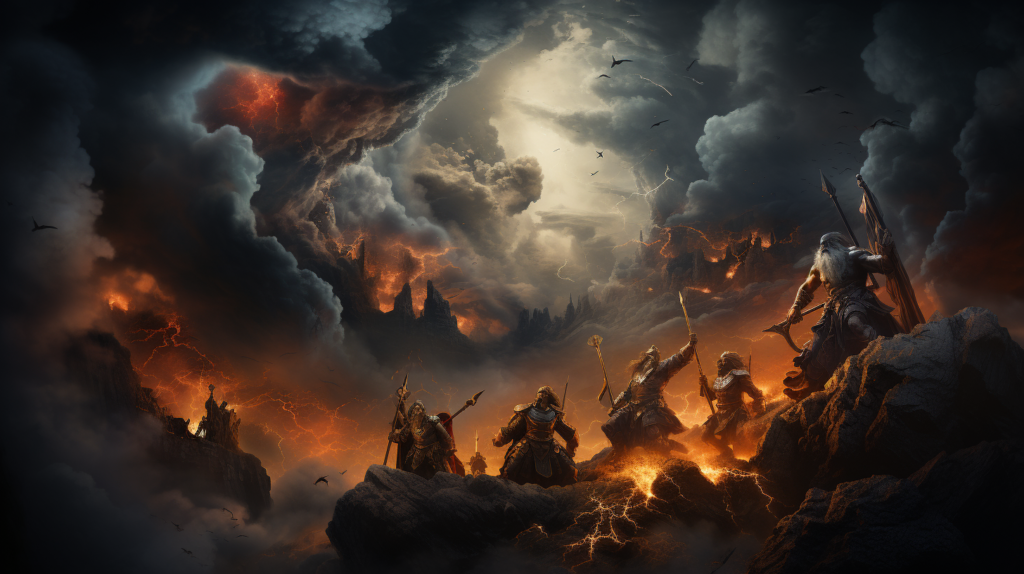Unlike the religion that would follow, one cannot talk about a unified Old Norse religion. It was based on oral stories and traditions, which could differ markedly geographically and temporally. Stories of the Gods told in one area could contradict stories in other places.
But still, the stories and traditions that the religion was founded upon had many similarities and can be said to share an overarching worldview.
Common to the Old Norse religion was that it was polytheistic, which meant that people worshiped several gods. Before I give a short account of the main features of this religion, I want to point out that the written accounts mainly come from Snorre Sturlasson who wrote this down in the 13th century, centuries afterwards and from a Christian perspective. He claimed however to base his writings on older sources.
Let’s start from the beginning – the creation of the Earth

In the First Age, before the creation of the world, the only thing that existed were cold and heat. In the north lay Nifelheim, with bitter cold and ice. In the south lay Muspelheim, consisting of a sea of flames. Between them lay Ginnungagap, an empty space where eventually cold and heat met, and two creatures emerged from the ice and fire.
One was the giant, Ymer, and the other an enormous cow, Audhumbla, which fed Ymer. She also licked the ice until a man emerged from it – Bure, who is the ancestor to the Æsir. Ymer had children with himself, and from him descended the giants. Bure must also have made his own children, because his son, Bor, mated with the giantess Bestla, and she gave birth to Oden and his brothers Vile and Ve, the first Gods.

The brothers rebelled against the giants. They killed Ymer, and brought his body to Ginnungagap where they used his body to create the world – his flesh became land and his blood sea. His bones became the mountains, and his hair made the grass. Ymer’s skull became to sky and his brains the clouds. The world they created was named Midgard.
Then the Gods created the first humans – Ask and Embla – from driftwood, and they populated the earth. That’s when the Second Age began, and it would last as long as the Gods and giants maintained the balance of the world. It was this age the people of the Viking Age believed they lived in.

But they knew their way of life was not forever. The world, as they knew it, was destined to perish. This impending catastrophe was called Ragnarök.
During Ragnarök, war would break out amongst humans and Gods, brother would fight brother, Gods would fight the giants. After three years of wars and natural catastrophes, the Fimbulwinter would come, an ice age where almost all living things perish.
The great wolf Fenrir breaks free from his bonds and in a fight with Oden swallows him whole. Loki escapes from his prison and leads an army of giants against the Gods. Tor battles the Midgard Serpent, Jörmungandr.
It is all in vain. Gods and men lose the battle, and the world falls.
But it is not the end. One God, one man and one woman – Liv and Livtrasir – survives and will found a new human race. A new sun rises over a world where food is plentiful and life easy. That would be the Third Age.
Sources:
Hjardar, Kim. Vikingarnas Värld. (2016)
Lihammer, Anna. Vikingatidens Härskare. (2021)

